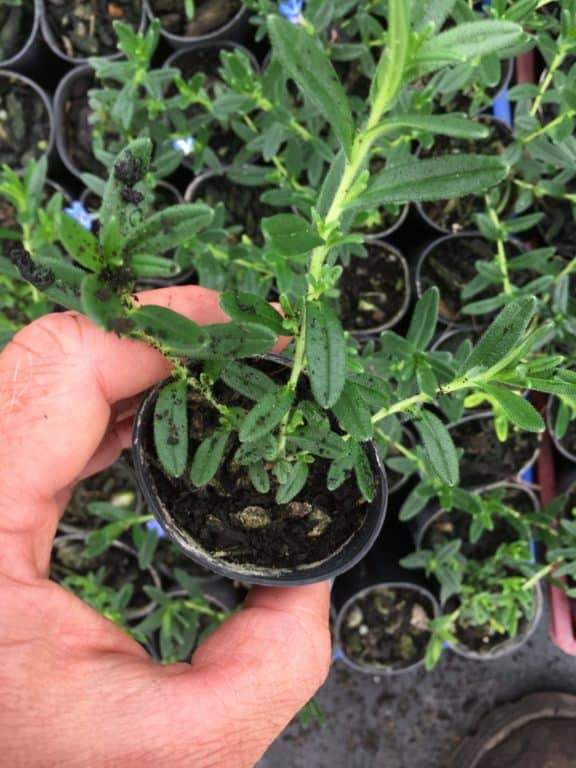
Lithodora diffusa is a great little ground cover. It has soft foliage and during the warmer months is covered in small blue/mauve flowers. The foliage is dense and deep green in colour.
This was our first attempt at propagating lithodora so we experimented, made some mistakes and learned a few things. As we had never taken cuttings of lithodora before we tried 2 types of cuttings. Soft tip cuttings and semi-hardwood cuttings.
The semi hardwood cuttings we took were basically a total fail! The soft tip cuttings were far more viable. Another mistake was we took these cuttings at the beginning of winter, we have no bottom heat supplied to our cuttings and I think they may have been over watered and some of the cuttings rotted out.
Going forward I think we will achieve much better success if we stick to soft wood tip cuttings and take the cuttings during a warmer part of the year.
Harvest the cuttings
So we have learnt that the cuttings taken need to be soft tip cuttings. Avoid any stem that is brown in colour, this indicates it is older wood. We found the older wood cuttings to be unviable. Also try and take the cuttings during warmer months of the year when the plant is actively growing.
When taking any cutting, choose a vigorous healthy specimen to harvest as a cutting is a clone of the mother plant. Avoid plants with pest and diseases.
We like to take small cuttings, these were between 2-3″(5-7.5cm) long. Smaller cuttings gives the plant less foliage to transpire thus allowing more energy to be devoted to striking roots.
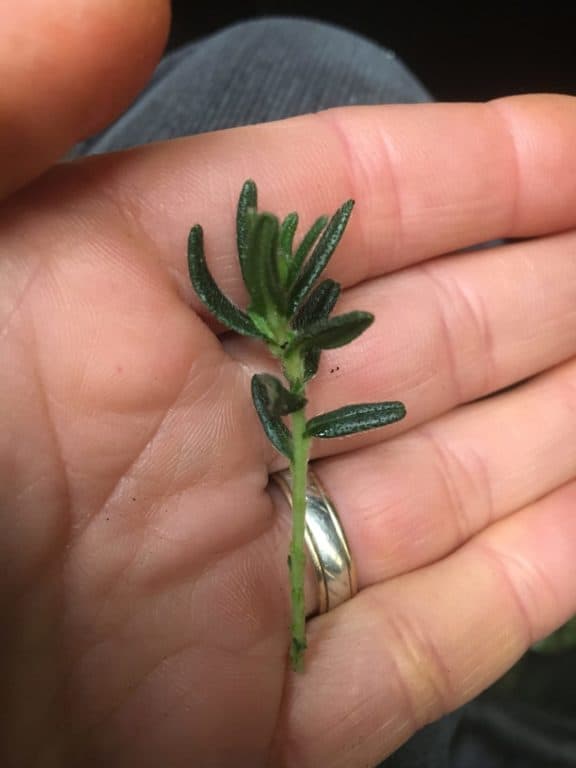

Striking the roots
We almost always use our mix of perlite and peat moss when choosing a medium to strike roots on cuttings. Our mix is 90% perlite 10% peat moss. Both are excellent at retaining moisture. The perlite allows good airflow to penetrate the root zone.
We simply water the mix, then use a small bamboo skewer to create a small hole in which we can then insert the cutting.
Once the cutting are in the mix we thoroughly water and store them in our poly tunnel green house. If you do not own a greenhouse, select a sheltered area out of direct sunlight and sheltered from the wind. There still needs to be a decent amount of light, just not direct sunlight.
Whilst waiting for roots to develop we keep the perlite and peat moss moist but not wet. This is always difficult for me during winter as they don’t need water every day. Test the mix with your finger before watering.
These cuttings were taken during winter and took almost 3 months to develop roots. Again, I think this time frame will be less on our next attempt during the warmer months.
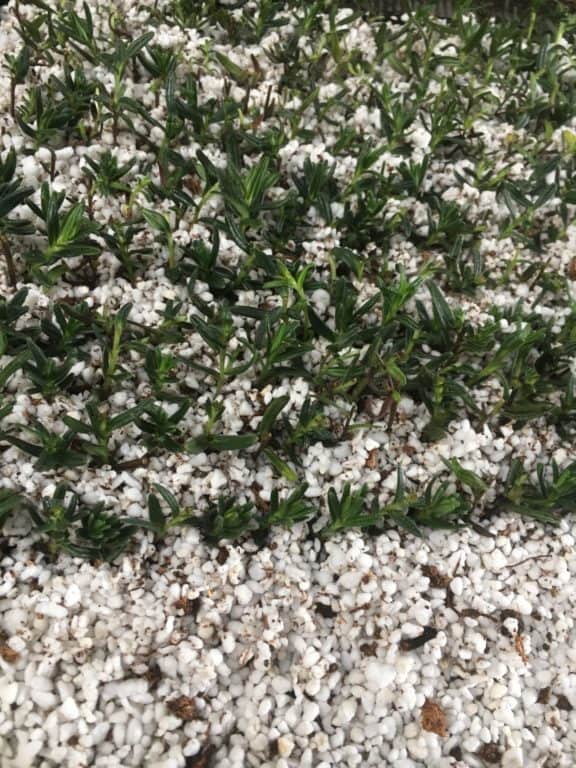
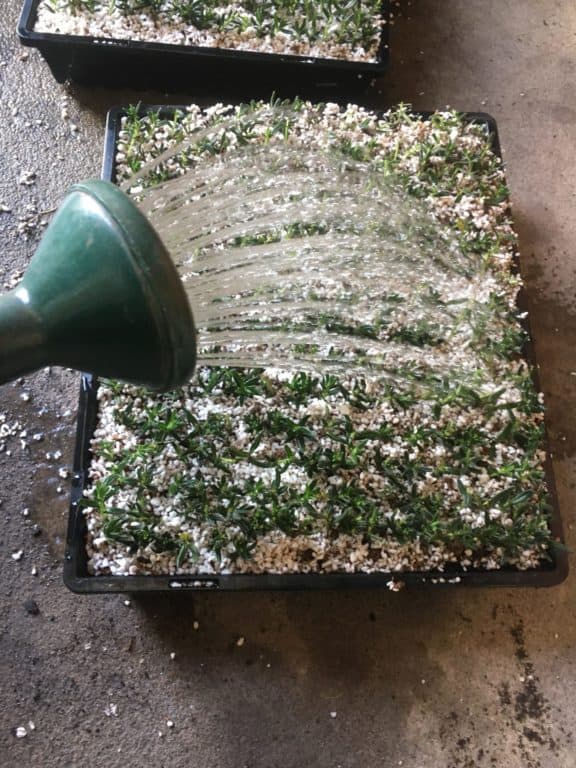
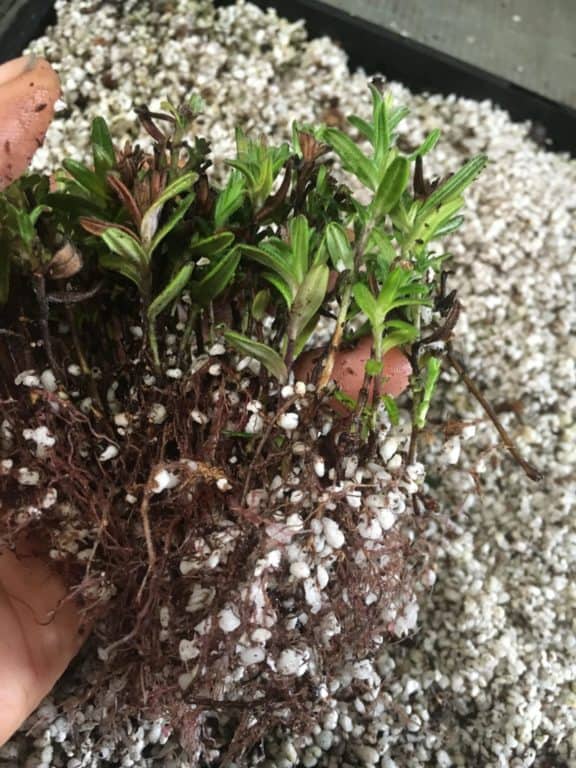
Potting
We potted ours into small 2″(50mm) seedling pots. This just helps to fit many more plants into our greenhouse. It’s also much more efficient to only water a small area.
When you’re potting cuttings, you should always use a good quality potting mix with plenty of organic material and trace elements.
These cuttings, like all our cuttings, we watered with a seaweed solution after potting into soil. Ensure this first watering is really thorough.
Once we potted the cutting we then returned them into the greenhouse, even though they have roots they are still vulnerable to drying out. Our general rule is to wait until the plants double in size, and the root system fills the pot before exposing them to the elements.
These cuttings were in the greenhouse after potting for a further 2 months, however this was probably over kill and they could have come out after a month. Being as it was the first time we had done these, we may have been over protective.
After the plants have been exposed for a couple of weeks, feel free to plant them directly into the garden, larger pots or hanging baskets.
We do hope this article on our attempt at propagating lithodora has been helpful. If so, we would love it if you would subscribe at the bottom of the page . Happy planting:)
Below is a short video showing the above steps.
CLICK HERE TO SEE MORE PLANTS WE PROPAGATE
PROPAGATION KIT
We have also put together a resource page that contains links to the products we use or similar. If you want to check that out click the link.
Lithodora Propagation Video
Lithodora diffusa information

Lithodora diffusa is an evergreen perennial ground cover. In spring-summer it produces a profusion of blue/mauve flowers. The tiny leaves are deep green and form a dense mound about 1m (3.5ft) wide.
An ideal choice for rockeries, spilling out of large containers or hanging baskets. Provides pops of blue throughout the garden when in flower. The foliage is soft to touch with a hairy texture making it a great choice spilling over retaining walls where kids play.
Prefers a moist well draining acidic soil. Can be pruned after flowering to maintain compact growth. In hot climates it will benefit from an area with afternoon shade.
CULTURAL NOTES
Botanical name: Lithodora diffusa
Common name: Lithodora
Family: Boraginaceae
Native to: Mediterranean
Flowers: Spring into summer
Position: Full sun, part shade
Height: Ground cover
Width: 1m
